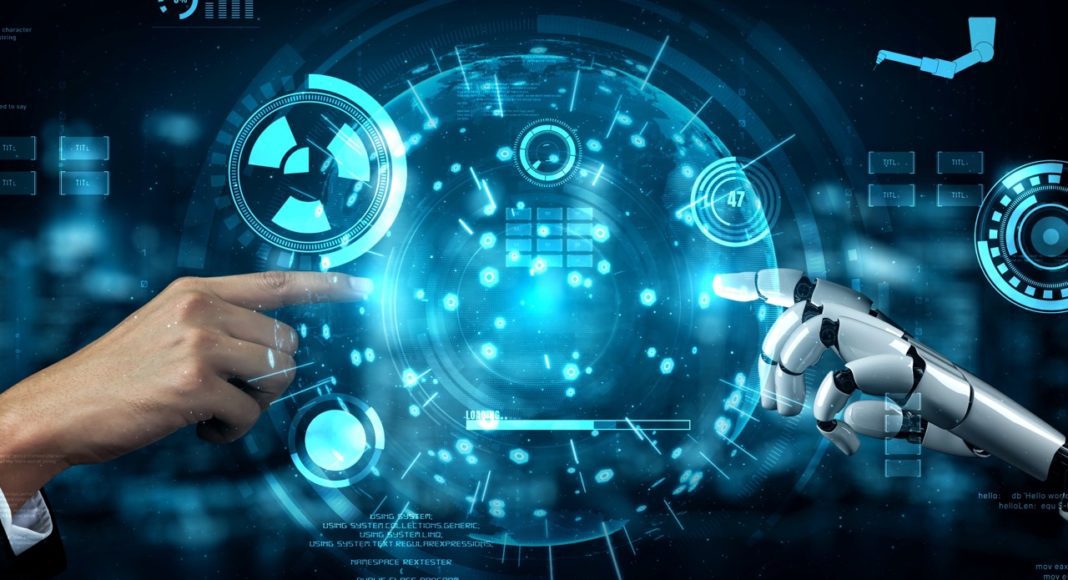Digital twins on the manufacturing menu – with help from the hyperscalers
SOURCE: HTTPS://WWW.IOTTECHNEWS.COM/
NOV 16, 2023
Is the industrial metaverse an extension of digital twin technology?
SOURCE: RCRWIRELESS.COM
AUG 12, 2022

The industrial metaverse is an idea that’s picking up momentum as more businesses find uses for metaverse visualization and interaction tools and technology. Digital twins — virtual representations of physical objects and processes — long predate the industrial metaverse idea, but the two have increasingly become perceived as synonymous.
First, let’s differentiate digital twins from the industrial metaverse. Industrial metaverse technology sits at a unique crossroads of industrial Internet of Things (IoT), AR, MR and Virtual Reality (VR) for industrial use. The concept, while nascent, is picking up speed as stakeholders are building out the technology and infrastructure to make it happen. It’s already seeing use in limited fashion around the world.
Nvidia and Siemens, for example, are working together to make the industrial metaverse a reality. Nvidia’s Omniverse, already in use to create digital twin cities to help Ericsson with urban cell densification projects, is one cornerstone of the collaboration. The other is Siemens’ Xcelerator digital business platform — a curated collection of IoT hardware, software, and digital services developed by Siemens and its partners.
“Photorealistic, physics-based digital twins embedded in the industrial metaverse offer enormous potential to transform our economies and industries by providing a virtual world where people can interact and collaborate to solve real-world problems. Through this partnership, we will make the industrial metaverse a reality for companies of all sizes,” said Roland Busch, Siemens AG’s president and CEO.
A digital twin is, broadly, “a virtual model designed to accurately reflect a physical object,” according to IBM. Digital twins work in real-time with real-life counterparts equipped with sensors to track whatever criteria researchers want to test or observe. IBM offered an example:
“The object being studied — for example, a wind turbine — is outfitted with various sensors related to vital areas of functionality. These sensors produce data about different aspects of the physical object’s performance, such as energy output, temperature, weather conditions and more. This data is then relayed to a processing system and applied to the digital copy,” said IBM.
Researchers can run simulations on the digital twin, study its performance and operation, make tweaks, and use the insights generated in this process to apply changes to the physical counterpart. The goal of a digital twin is to enable faster, more agile and efficient development and iteration. And it doesn’t just apply to objects like turbines, either — IBM noted that processes and workflows can be created as digital twins.
“Process twins, the macro level of magnification, reveal how systems work together to create an entire production facility,” IBM wrote.
Digital twins are distinctly different from simulations, IBM noted.
“Digital twins are designed around a two-way flow of information that first occurs when object sensors provide relevant data to the system processor and then happens again when insights created by the processor are shared back with the original source object,” they wrote. So, the difference between digital twins and simulations includes scale and rich data analysis.
The American space agency NASA and the U.S. Department of Defense’s Defense Advanced Research Projects Agency (DARPA) are generally credited with coining and popularizing the term “digital twin” and the concept itself, as a way of more safely, quickly and efficiently testing aircraft and spacecraft during their development.
Esa Aho, Fujitsu Finland’s head of portfolio, offered some insights about how digital twins and the industrial metaverse converge.
“Digital twins, already established in the sector, are digital models of an object or system, but where a human isn’t a dynamic part of the model. On the other hand, the metaverse allows humans to interact dynamically in environments made up of digital images — furniture, cars, pictures of products, for example — but without the ability to change the state of those objects,” he wrote.
“Put a digital twin inside a metaverse and what we now have is a ‘metafactory,’ where people can experience and work with the machines and systems that comprise the factory. A metafactory would make digital twins more alive because people are a massively important aspect of any system. Put another way — it’s not a twin if there’s no human in it,” said Aho.
Aho says the convergence between digital twins and industrial metaverse will enable people to operate machinery in new and innovative ways. Monetization, efficiency and agility may be the bottom line for enterprises considering metafactories employing industrial metaverse and digital twin technology, but Aho sees it as an equalizing opportunity for the workforce, as well.
“It would open up new employment options for people with physical disabilities and the elderly who may have difficulty going out. Anyone can realize their potential in a virtual space, for example, by using remote robotics to see the physical world or by using technology to pursue advanced education,” he wrote.
ABOUT AUTHOR

Peter is Technology Editor for RCR Wireless News. His coverage areas include telco cloud and the convergence of 5G and cloud computing. Peter's background includes IT management and a decade as a senior editor at Macworld. He and his family live in Massachusetts.
LATEST NEWS
Augmented Reality
Hi-tech smart glasses connecting rural and remote aged care residents to clinicians
NOV 20, 2023
WHAT'S TRENDING


Data Science
5 Imaginative Data Science Projects That Can Make Your Portfolio Stand Out
OCT 05, 2022

SOURCE: HTTPS://WWW.IOTTECHNEWS.COM/
NOV 16, 2023
SOURCE: HTTPS://AITHORITY.COM/
OCT 03, 2023
SOURCE: HTTPS://WWW.SCIENCEDAILY.COM/
AUG 08, 2023
SOURCE: HTTPS://WWW.GLOBALLOGIC.COM
JUL 06, 2023
SOURCE: HTTPS://INDIAAI.GOV.IN/ARTICLE/HOW-DIGITAL-TWIN-TECHNOLOGY-WILL-EVOLVE-IN-2023
JUL 04, 2023
SOURCE: HTTPS://WWW.CNBC.COM/2023/01/21/DIGITAL-TWINS-ARE-SET-FOR-RAPID-ADOPTION-IN-2023.HTML
JUN 30, 2023